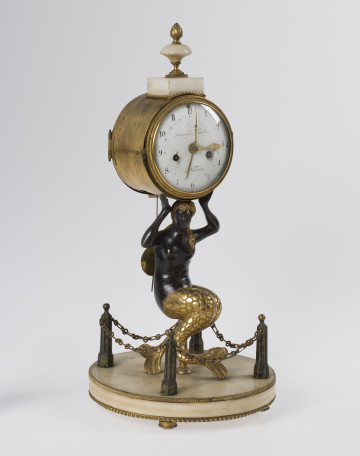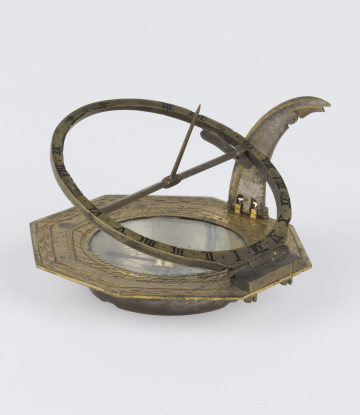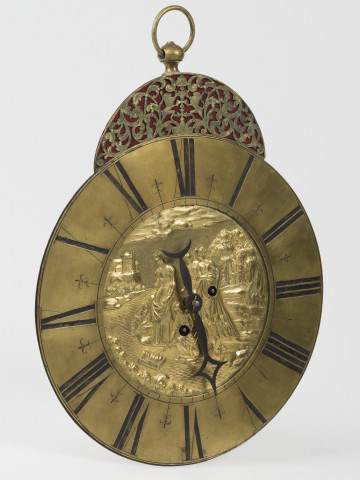
Mantel clock
Museum of King Jan III's Palace at Wilanów
Part of the collection: European enamelworks
A salt cellar in the shape of a small cup, fully covered with enamel with en grisaille decoration against a black background. On the round foot narrowing towards the top, there are two scenes (separated with a tree and an escutcheon) that show putti hunting bears. In the first scene, a bear is attacked by a putto. In the second scene, a bear lies defeated with victorious putti on it. The bowl in the shape of a flattened ball is adorned with a frieze: on axes there are four mascarons with features of satyrs; between them, there are resting satyrs against the background of a bunch of fruits: two are asleep, and the other two hold olive branches in their hands. From the bottom, the bowl is adorned with a rosette of laurel leaves. In the groove constituting the proper salt cellar, there is the bust of a bearded man in a costume from the epoch, in profile facing right. The spout is decorated with an ornament of circles, with four small mascarons around them. There is an ornament is on the edge of the foot, under the spout, and there are delicately gilded small elements.
In the 16th century, salt cellars were an important part of table etiquette. They were placed in front of the most important person, and a small amount of expensive spice was served in them. Because of the high price of the spice being served, these were decorative vessels of quite distinctive size, made of valuable raw materials, or valuable artistic objects. The silver ones usually had gilded bowl bottoms to prevent the fast corrosion of the vessel. The bowl of salt was often covered with various kinds of canopies or other forms of “roofing”. Along with the popularisation of salt and a decrease of its price, vessels lost their unique decorative features, turning into commonplace objects.
On the basis of scarce original information, we can suppose that the collection of Limoges enamels was presumably created by Aleksander Potocki and expanded by his son August.
The salt cellar was shown to the Warsaw audience during An Exhibition of Antique and Art Objects in the palace of Count August Potocki and his wife at Krakowskie Przedmieście 32 (today the Museum of the University of Warsaw) in 1856. It is described in the catalogue of this exhibition under item 797.
Joanna Paprocka-Gajek
Dimensions
entire object: height: 10,0 cm, width: 8,9 cm
Technique
forging,enamel,repoussage
Material
copper,silver
Owner
Museum of King Jan III's Palace at Wilanów
Identification number
Location / status

Museum of King Jan III's Palace at Wilanów

Museum of King Jan III's Palace at Wilanów

Museum of King Jan III's Palace at Wilanów
DISCOVER this TOPIC
National Museum in Szczecin
DISCOVER this PATH
Educational path